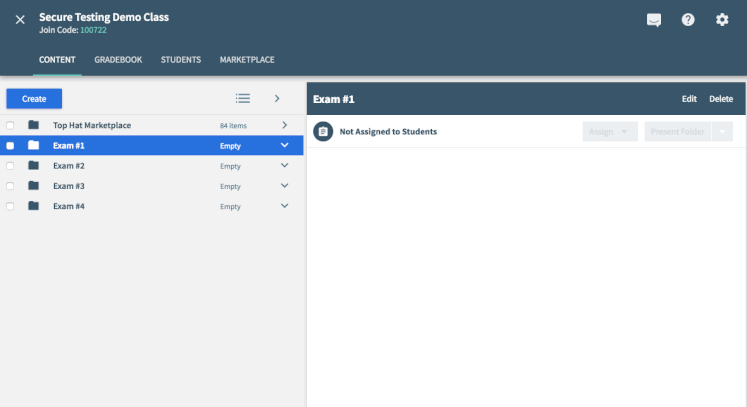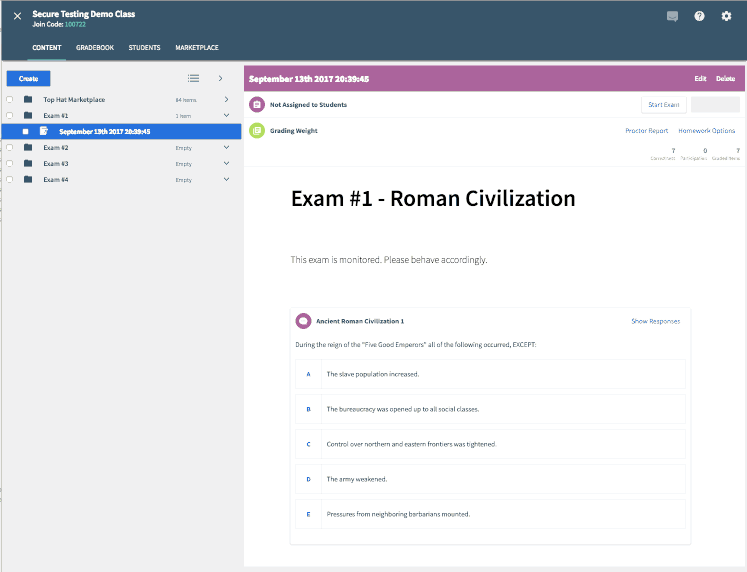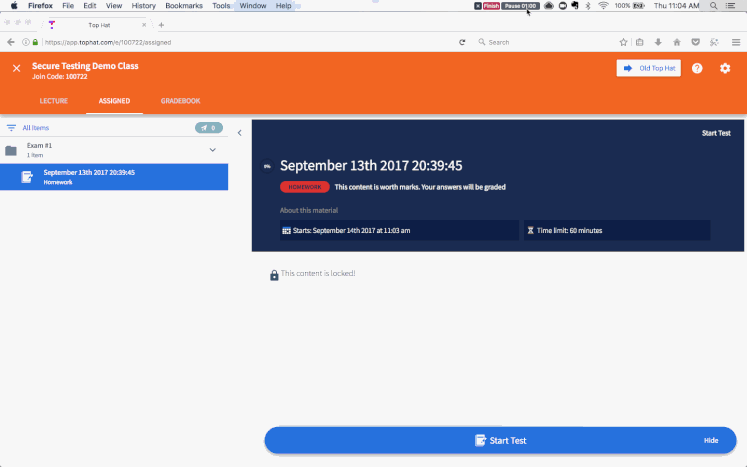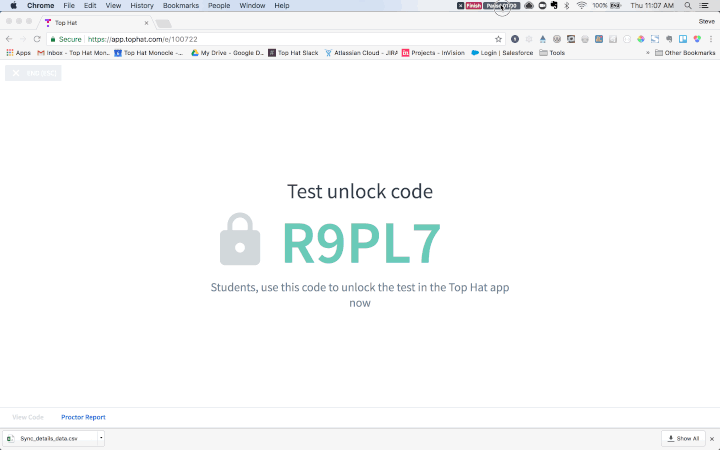Faced with unrelenting pressure to achieve high grades and increased competition for jobs and graduate school slots, students are resorting to risky measures in order to get ahead.
In a survey of over 70,000 undergraduate students conducted by the International Center for Academic Integrity, 68 percent of respondents admitted to cheating on a test or written assignment.
A 2014 survey of 41 universities in Canada showed more than 7,000 students had been disciplined for academic misconduct in the 2011–2012 academic year. In the U.K., the number of university students using smartphones and other devices specifically to cheat has increased 42 percent since 2012. And in the U.S., even top universities are struggling with cheating scandals that threaten to tarnish their reputations.
Online Assessments
Top Hat provides instructors with everything you need to teach your course, regardless of where it takes place. With easy-to-use tools, educators can ensure academic rigor and integrity are maintained in the online classroom.
-
- Secure remote tests and exams: Instructors can securely administer quizzes, tests and exams on students’ computers. They are able to set specific start and end times and verify identities online to ensure that the right students are completing tests. During test-taking, instructors can monitor student activity, with an automatically generated, easy-to-understand proctor report that flags irregular student behavior.
- Assessments: As an alternative to proctored tests and exams, instructors can also create auto-graded assignments tailored to course material, to help reinforce and assess learning asynchronously. Assessments are simple to create, with the option to seamlessly upload questions you’ve already created for use in your course. Asssessments can also be personalized for individual students, with options to customize homework, assignment settings and due dates.
- Polls and Quizzes: Use 14 different question types—like multiple choice, click-on-target and numeric answers—to introduce new concepts, reinforce students’ understanding of topics and assess learning. Grades and student participation data can be easily exxported to your LMS, to help streamline the gradinng process.
We share the concerns of professors and administrators navigating through the virtual classroom.
Top Hat is designed to help professors create connections with students, no matter the learning environment. Engage your students beyond the traditional capabilities of an LMS with lecture streaming, interactive participation, media-rich assessments and data-driven insights, all in one platform. Click here to learn more.
Testing in face-to-face learning environments
But the means by which students cheat isn’t going away. So what can educators do about it?
Top Hat Test combats the problem. It allows professors in traditional classroom environments to create digital tests that students can take on their own devices. These tests monitor student behavior, locking them out if they stray from the test, thus reducing the risk of cheating.
We spoke with Product Manager Steve Pascoe about what instructors and students can expect.
What did Top Hat want to achieve with Top Hat Test?
“We wanted to:
-
-
- Provide educators with an easy way to create and administer tests in traditional classroom environments
- Provide a secure exam experience to ensure the academic integrity of the test
- Provide flexibility in the security options to support a variety of test scenarios
- Provide an easy in-test experience for students
-
“In order to do that, we needed to monitor and analyze student activity during the test to detect cheating behaviors. If detected, the student is automatically locked out of the test.
“We then wanted to make it easy for an instructor to access a report on these behaviors and decide whether the student should be let back in.”
How does an instructor create a test?
“Tests (or quizzes or exams) are made using the ‘Exam’ option in the Top Hat app. Instructors have the option of creating their own or pulling in pre-made questions from the Marketplace.

“When an instructor starts a test, an alphanumeric unlock code appears. In order to take the test, students have to input the same code on their devices.”

How does the testing process work for students?
“To take a test, students select the test from the Top Hat app on their device. They’ll then be prompted to enter the unlock code supplied by the instructor.

“If at any point during the test a student leaves tophat.com (i.e opens another browser on their laptop or device), they will be warned that they can’t return to the test. If they proceed, they will be locked out and only the instructor can let them back in.”

What information is supplied to professors during examinations?
“If a student reaches a certain threshold of questionable behavior according to the algorithm, the Top Hat app will lock him or her out. The student’s name will then appear in a real-time report generated in Top Hat that updates with the list of students who have been locked out.
“Using this information, the instructor can make the decision to allow a student back into a test. Instructors also have the option to manually lock out a student if they see him or her exhibiting behavior that isn’t automatically tracked in Top Hat.”
What happens when the exam is over?
“Students hit ‘submit’ and then can view their grades in the Top Hat gradebook once grades have been tallied.”
You’ve been testing this with a couple of instructors and students in different locations in North America. What’s the feedback been like so far?
“Feedback has been generally positive, even during our closed beta stage. We plan to evolve Top Hat Test over time. It’s a feature that solves a big problem for a lot of instructors.
“Our customers are also thrilled to now have everything they need to teach a course in one place. Top Hat offers interactive content, formative assessment for inside and outside the classroom, and now, with the introduction of Top Hat Test, a summative testing capability. Instructors are reacting very positively to having all of this functionality in one integrated tool.”


